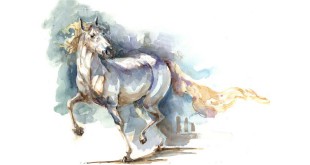Boxwood — Buxus is a genus of about 70 species in the family Buxaceae. Common names include box (majority of English-speaking countries) or boxwood (North America). The boxes are native to western and southern Europe, southwest, southern and eastern Asia, Africa, Madagascar, northernmost South America, Central America, Mexico and the Caribbean, with the majority of species tropical or subtropical; only …
Read More »Box Elder
Box Elder — Acer negundo is a species of maple native to North America. Boxelder, Boxelder Maple, and Maple Ash are its most common names in the United States. Other English names such as Ash Maple, Ash-leaf Maple, Black Ash, California Boxelder, Cutleaf Maple, Cut-leaved Maple, Negundo Maple, Red River Maple, Stinking Ash, Sugar Ash, Three-leaved Maple, and Western Boxelder. …
Read More »Bougainvillea
Bougainvillea — Bougainvillea is a genus of flowering plants native to South America from Brazil west to Peru and south to southern Argentina (Chubut Province). Different authors accept between four and 18 species in the genus. The name comes from Louis Antoine de Bougainville, an admiral in the French Navy who discovered the plant in Brazil in 1768. They are …
Read More »Blueberry
Blueberry — Blueberries are flowering plants in the genus Vaccinium, sect. Cyanococcus. The species are native only to North America. They are shrubs varying in size from 10 cm tall to 4 m tall; the smaller species are known as “lowbush blueberries”, and the larger species as “highbush blueberries”. The leaves can be either deciduous or evergreen, ovate to lanceolate, …
Read More »Bloodroot
Bloodroot — Bloodroot (Sanguinaria canadensis) is a perennial, herbaceous flowering plant native to eastern North America from Nova Scotia, Canada southward to Florida, United States. It is the only species in the genus Sanguinaria, and is included in the family Papaveraceae and most closely related to Eomecon of eastern Asia. Bloodroot is also known as bloodwort, red puccoon root, and …
Read More »Horses Coloring Pages
Horses Coloring Page: Click on the horse image, it will open the selected image attachment page. Right click on the image in the attachment and save it on your desktop for later use. Horses Coloring Pages
Read More »Belladonna
Belladonna — Deadly nightshade (Atropa belladonna), also known as belladonna, dwale, Banewort, Devil’s Cherries, Naughty Man’s Cherries, Divale, Black Cherry, Devil’s Herb, Great Morel, and Dwayberry, is a well-known perennial herbaceous plant, with leaves and berries that are highly toxic and hallucinogenic. It is in the nightshade family (Solanaceae), which it shares with potatoes, tomatoes, eggplants, jimsonweed, tobacco, goji, and …
Read More »Begonia
Begonia — Begonia is a genus in the flowering plant family Begoniaceae. The only other member of the family Begoniaceae is Hillebrandia, a genus with a single species in the Hawaiian Islands. The genus Symbegonia is now included in Begonia. “Begonia” is the common name as well as the generic name for all members of the genus. With ca. 1500+ …
Read More »BellFlower
BellFlower — Campanula is one of several genera of in the family Campanulaceae with the common name bellflower. It takes its name from their bell-shaped flowers, and campanula is Latin for “little bell”. The genus includes about 300 species and several subspecies, distributed across the temperate regions of the Northern Hemisphere, with the highest diversity in the Mediterranean region east …
Read More »Bindweed
Bindweed — The Convolvulaceae, known commonly as the bindweed or morning glory family, is a group of about 60 genera and more than 1,650 species of mostly herbaceous vines, but also trees, shrubs and herbs. They can easily be recognized by their funnel-shaped radially symmetrical flowers. These have 5 sepals, a corolla of 5 united petals and 5 stamens. The …
Read More » Kids Portal For Parents India Kids Network
Kids Portal For Parents India Kids Network
